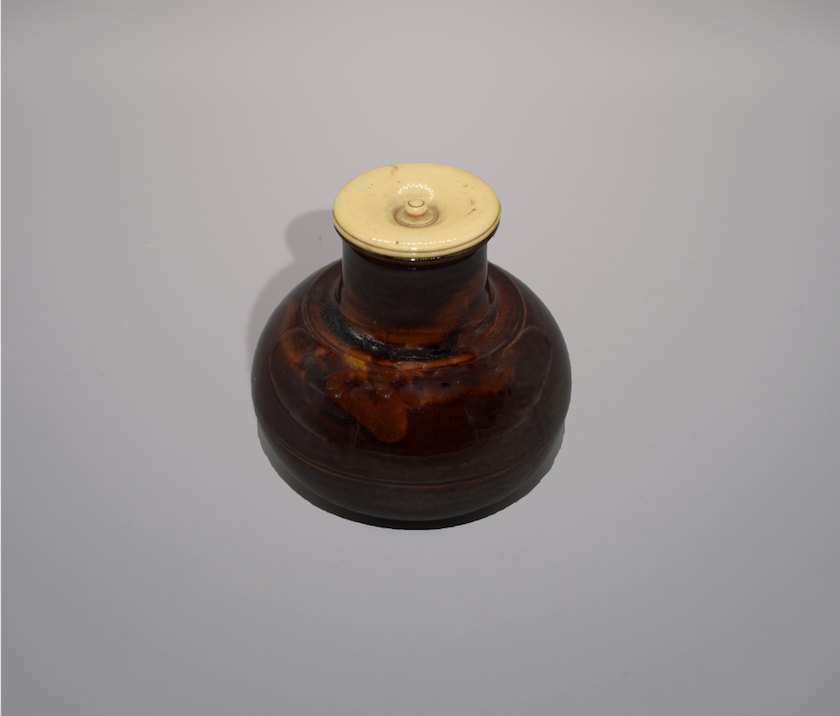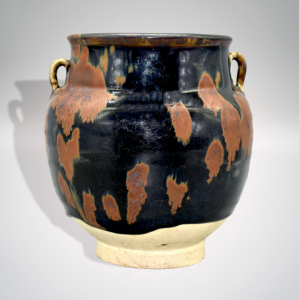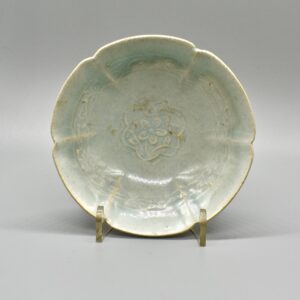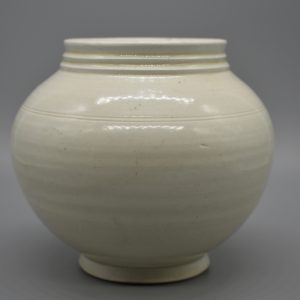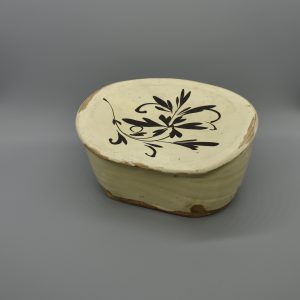This small and delicate tea caddy covered in an iron brown glaze, which stops near the bottom to expose the clay body was used to store powerful powdered green tea and used by a Japanese tea master to make tea in the Japanese tea ceremony. Karamono tea caddys made in China during the Southern Song Dynasty and the Yuan Dynasty were exported to Japan amongst other tea ceremony utensils and are highly admired even to this very day. High quality silk ‘shifuku’ bags were made for the tea caddy to be also admired during the tea ceremony, the tea master would typically choose the ‘shifuku’ bag depending on the season.
The earliest references of tea recorded in Japan are during the 9th century or Tang Dynasty China when two Buddhist monks, Kukai and Saicho, brought back tea to their homeland, subsequently quickly becoming a drink for the religious and royal classes. Tea consumption became popularized among the masses during the 12th-13th centuries after the publication of Eisai’s ‘Kissa Yojoki’, which was a catalyst in the development of the Japanese tea culture.
• A similar Karamono Cha-ire Marutsubo type is displayed in the Miho Museum, Kyoto.

